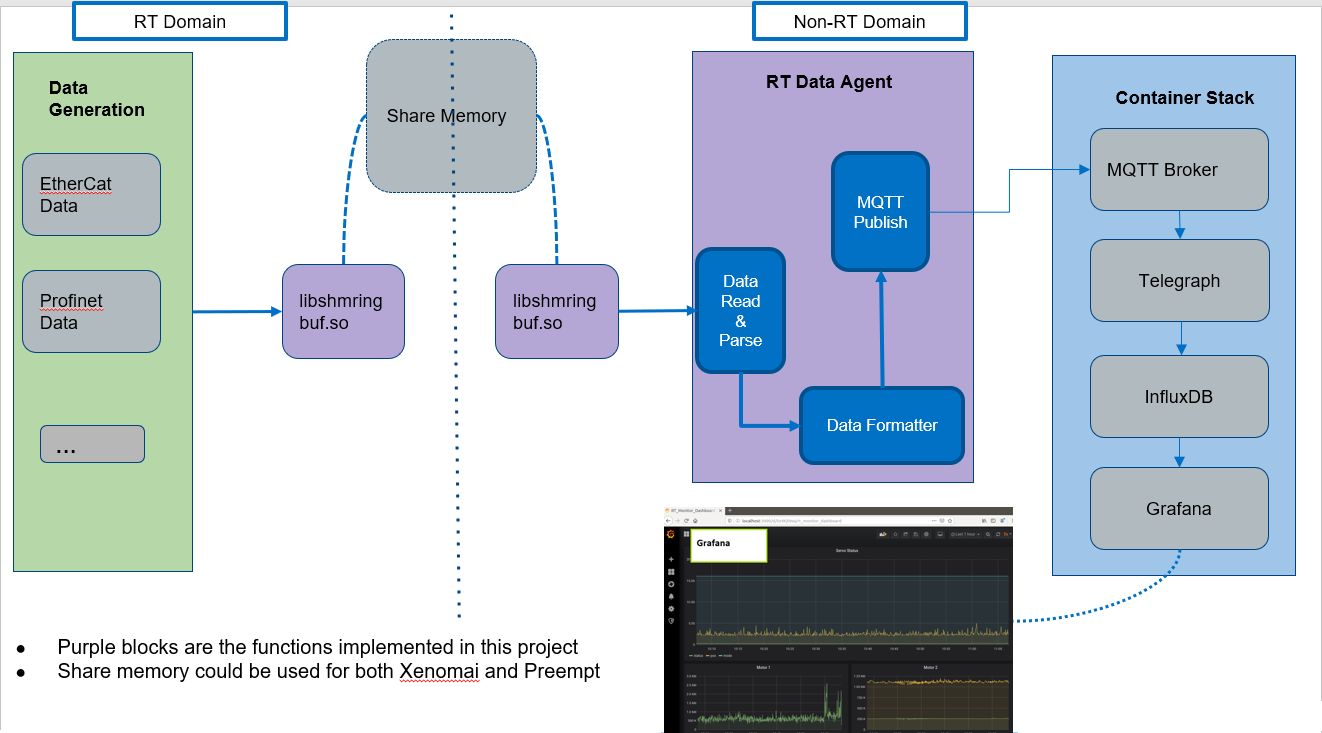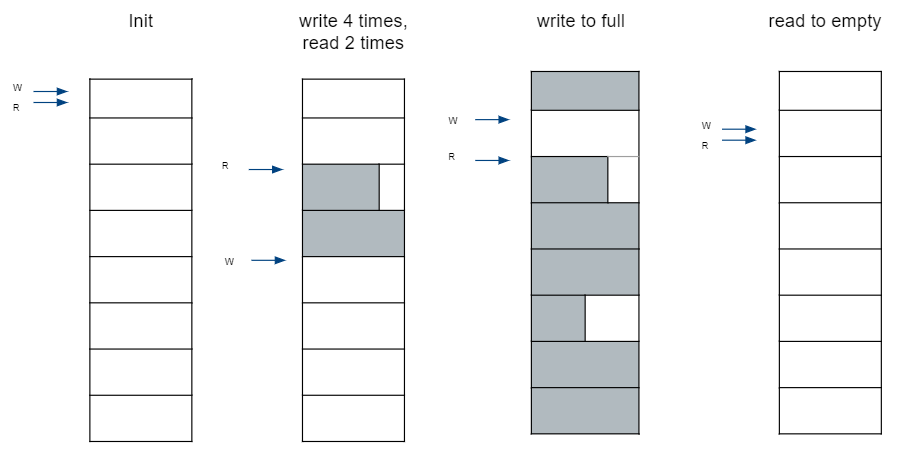Real Time Data Agent¶
The Real Time Data Agent provides an unified and real-time way to write/read data to/from shared memory, and also a demo program to parse/pack/send data to container stack for storage and visualization. It includes below three major parts.
Block based lockless shared memory ring buffer library
Python3 example program
Example time series database container stack
It supports both Xenomai kernel, Preempt RT kernel.
Main structure and data flow¶

Demo agent program to process the real-time data¶
The following section is applicable to:

In the installed ECI image, the example demo program is in the path /opt/rt-data-agent/agent/.
The program entry is the agent.py.
python3 agent.py --host <mqtt broker ip> --port <mqtt port> --qos <mqtt qos> --lib < shared memory library path>
<mqtt broker ip>, defaultlocalhost<mqtt port>, default 1883<mqtt qos>, default 1<shared memory library path>, default/usr/lib/libshmringbuf.so.0
In default, it starts three tasks as below:
ShmTask, wraps thelibshmringbuf.soin python3 by ctypes, continuously reads data from the shared memory (usually data written by another real time thread), then puts to a predefined data queue.DataFmtTask, reads data from the data queue, parse it (based on providedconfig.json) and re-pack it to mqtt format then puts to predefined mqtt queue.MqttPubTask, reads data from mqtt queue, then publish it to mqtt broker.
Example time series database container stack¶
The following section is applicable to:

In the installed ECI image, there is a example time series database container stack in the path /opt/rt-data-agent/stack.
It includes below four major container images:
mqtt broker, there is one default mqtt broker running in the ECI image,http://localhost:1883. If the stack is not running in ECI image, you can start the mqtt broker by the/opt/rt-data-agent/stack/mqtt-broker.yml.telegraf, configuration is in the/opt/rt-data-agent/stack/telegraf/. It sets input plugin as the mqtt broker and output plugin as the InfluxDB database.influxdb, the InfluxDB database, recording the time series data.grafana, visualize the time series data from the InfluxDB database, example configuration/dashboard is in the path/opt/rt-data-agent/stack/grafana.
Run the simulation example¶
The following section is applicable to:

In the ECI image, there is one simulation tool (/opt/rt-data-agent/sim/sim_rt_send) to send data (format as described in config.json) to shared memory block ring buffer (name shm_test).
In real case, replace the sim tool with the actual data generator, such as reading data by ethercat then sending data to shared memory with the Shared memory ring buffer library.
The agent then could be started to read the data from shm_test shared memory block ring buffer, and parse/pack/send the mqtt format data to mqtt broker.
The container stack starts to receive the data from mqtt broker, save to InfluxDB database, and could be visualized by grafana.
Here are the steps:
Step 1, in one terminal, starts the sim tool to send data in 10ms interval.
$ cd /opt/rt-data-agent/sim
$ sudo ./sim_rt_send -i 10
Step 2, in the third terminal, starts the container stack.
$ cd /opt/rt-data-agent/stack
$ docker-compose up
Step 3, in another terminal, starts the agent.
$ cd /opt/rt-data-agent/agent
$ sudo python3 agent.py
Step 4, if everything works fine, visualize the data in
http://localhost:3000.
